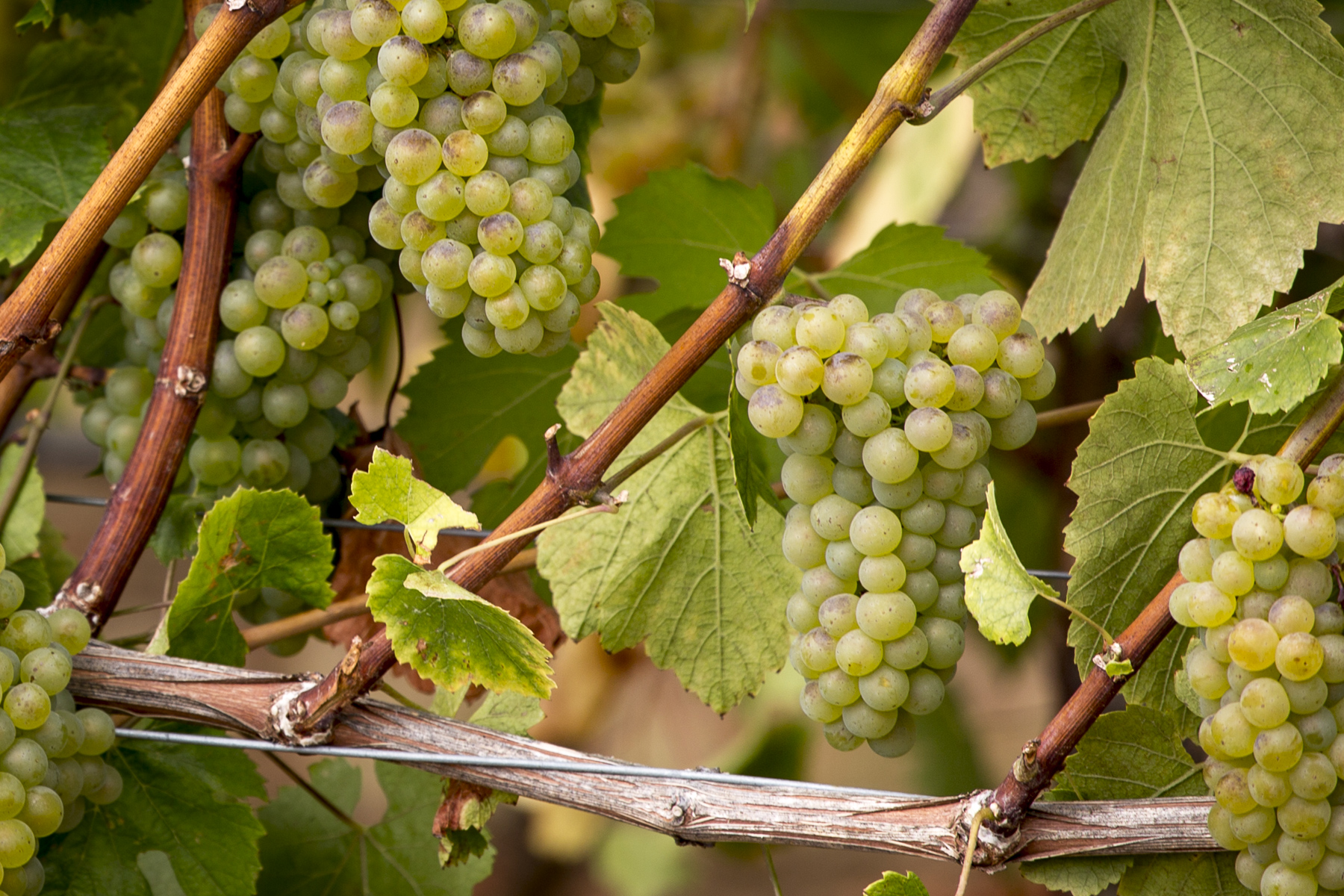We are experiencing a Chardonnay renaissance here in Oregon, with growing excitement for this classic white Burgundy grape. Our family is thrilled to be part of the movement to establish an Oregon style of Chardonnay.
Often referred to as the “winemaker’s white wine,” Chardonnay has an incredible capacity to take on character in the cellar, responding well to a variety of winemaking techniques. It’s even been called a “blank canvas” so some might mistakenly think this means that what we do in the vineyard doesn’t matter. Our experience says otherwise: we cannot make great Chardonnay without great vineyard sites and impeccable farming.
Early Struggles With Chardonnay

Our parents loved Chardonnay, but their early efforts at growing it were a disappointment. They struggled to get the fruit ripe in the late 70s and early 80s. Oftentimes, the October rains arrived before the fruit developed the character they wanted. Like many Oregon winegrowers, Pat and Joe had planted Chardonnay vines much better suited to California’s warmer climate. The high elevation of our Winery Estate and a string of cool vintages did not help.

By the early 1990s, Oregon Pinot Noir and Pinot Gris were making their mark on the global wine world, but Chardonnay in our state was mostly a disappointment. Fortunately, our mother had learned field grafting while growing up on a pear orchard in the Hood River Valley. One of my first vineyard jobs at age 11 was checking the Chardonnay plants we had grafted over to Pinot Gris, making sure that any new growth was from the bud that had been painstakingly transplanted onto each vine. These field grafts effectively removed Chardonnay grapevines from Elk Cove in favor of the newly popular Pinot Gris.
According to our mother, Elk Cove co-founder Pat Campbell “We had been buying Pinot Gris fruit from Cooper Mountain and we had great success with our first three vintages, so we decided to focus on that. Besides, there were 7000 chard producers in the world, many of them large producers in California! How could we compete with them? There was a lot less competition with Pinot Gris so we decided to focus on that.”
We thought we were done with Chardonnay – and good riddance.
A Return To Chardonnay
After a 25-year hiatus, we returned to Chardonnay with the purchase of Goodrich Vineyard in 2014. We bought the lower elevation vineyard for its high-density Pinot Noir plantings, but soon we were so charmed by its Dijon clones of Chardonnay that we launched our first Single Vineyard Goodrich Chardonnay.

Over the next 9 vintages, we worked to develop our own Chardonnay style. In the winery, we experimented with large oak puncheons to reduce oakiness, extended cool fermentations to retain freshness of fruit, lees stirring to add body and richness, and even concrete fermentation eggs – we weren’t initially sure what those would add! We also tried out different “malo bugs” the strains of malolactic bacteria that convert malic acid to lactic acid, giving Chardonnay its creamy character. Chardonnay is known for its ability to take on expressiveness in the cellar, and we wanted to try our hand at all of the techniques available to us. By selecting only the best barrels for our Single Vineyard bottlings, we had room to play and experiment and discover our own style.
In the vineyard, we planted new Chardonnay blocks on the lower slopes of our Mount Richmond and Five Mountain Vineyards, choosing the exact clones, vine density and trellising style we thought would best suit each site. We planted clones 548, 809, and 76, finding that this diversity of plant material added complexity to the resulting wines.
Led by a drive for quality and consistency, we have settled on a crisp, lightly oaked style that is both fruit-forward and richly textured with a backbone of bright acidity. And we have found that the vines we planted according to our own specifications gave us the results we wanted:
“After a decade of growing Chardonnay at Mount Richmond Vineyard, we wanted to see how these Dijon clone Chardonnay vineyard blocks were maturing. So for the 2021 vintage we ran an experiment: 10 puncheons of Goodrich Chardonnay vs. 10 puncheons of Mount Richmond Chardonnay. After Heather and I tasted each puncheon and put together two initial blends, we had a winner: with added ripeness and complexity to the fruit, the Mount Richmond Chardonnay was more deserving of the single vineyard designation.”
– Owner/Winemaker Adam Campbell
We are still working every growing season and every vintage to hone our craft making Chardonnay. Only one in 5 of our puncheons makes the cut each year for our Single Vineyard Chardonnay, but we still work every year to improve upon the last vintage, picking based on freshness and vibrancy, building body through long slow fermentations and adding richness with lees stirring. We are proud to be part of a community of winemakers all working to improve their technique and elevate the quality of Oregon Chardonnay.
Want to learn more about Oregon Chardonnay? Check out the Oregon Chardonnay Celebration or the fantastic listing of Chardonnay producers in the Willamette Valley. Cheers to Oregon Chard!
– Owner/Creative Director Anna Campbell




